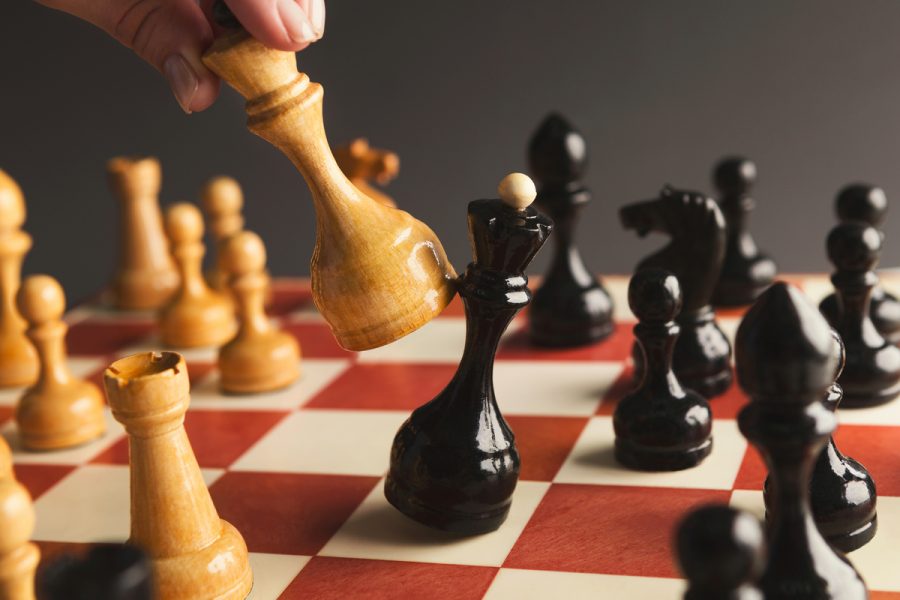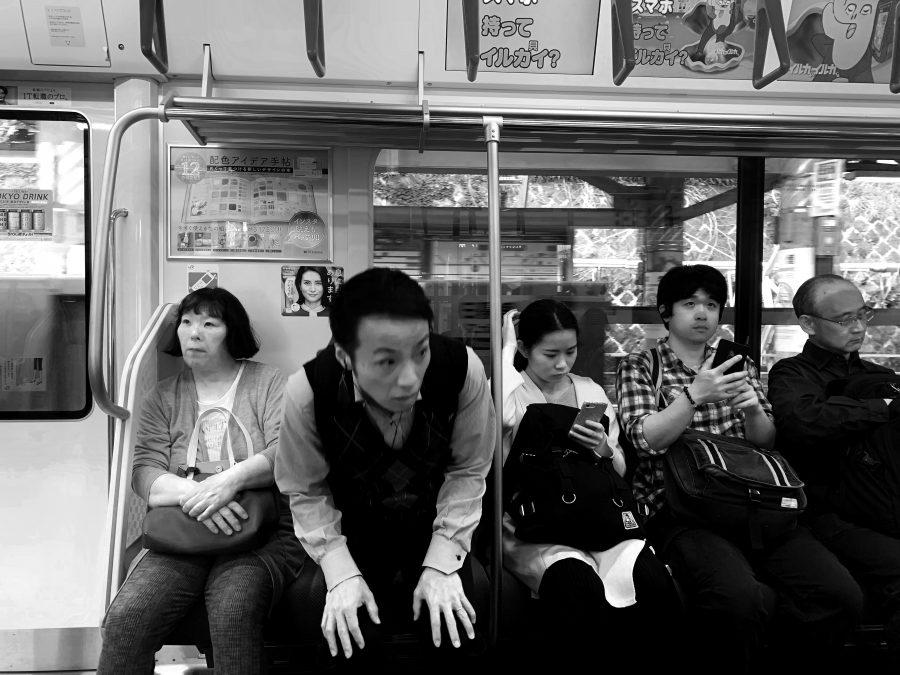Afast food restaurant is designed to be an extremely efficient place to buy a meal. We arrive in our cars, order, move forward, pay, move forward, get food and leave. Of course, the bulk of the journey is actually getting to the restaurant in the first place. In an effort to combat travel time and make fast food more accessible, franchises work together to evenly disperse their locations, right?
While dispersed locations may be best for customers, in reality, this situation is not what happens.
To explain why we do not see this dispersal, we can explore a theoretical scenario. Imagine a perfectly rectangular beach, stretching from left to right, on a hot day filled with people craving a cool cup of ice cream. Now, imagine that two entrepreneurs decide to profit off of this and set up ice cream stands with identical products and prices—we can call the ice cream stand on the left A, and the stand on the right B. The only distinguishing factor between these ice cream stands, to the population of the beach, is the distance they must travel to get to them.
The ideal scenario for the average beach goer has each stand positioned one quarter of the way from opposing ends of the beach; each customer must walk a maximum of a quarter of the length of the beach, and each entrepreneur takes 50 percent of the market share.
The entrepreneurs, however, are motivated to take as large of a market share as possible. Since they cannot improve their product, their only option is to be the closest option for the most potential customers. With this goal, entrepreneur A is clever and moves to the immediate left of entrepreneur B. Now, he gets 75 percent rather than 50 percent of the customers. Angered, entrepreneur B now moves to the immediate left of entrepreneur A. He does not quite get 75 percent of the market, but certainly he gets the lion’s share of consumers.
The two go back and forth in this fashion and, in the process, move toward and reach the center of the beach. At this point, each has 50 percent of the market share and has nowhere better to move. They each hold the same market share which they began with, except now some unlucky beach goers must walk two times farther.
Such behavior, in which rational actors (people or groups who take the best, most selfish, action), respond to their situation and to other actors, in order to improve their standing, is studied in a branch of mathematics called game theory. Game theorists would refer to the initial position of the ice cream vendors as a socially optimal solution, which is defined as a situation where all rational actors are in their best possible position (both for themselves and others affected). The vendors equally split sales, and the customers do not need to walk nearly as far. The ending position, where vendors competed for market share, while inconveniencing some customers, would be referred to as a Nash equilibrium. This state, named for mathematician John Forbes Nash Jr., is defined as a situation in which no party can better its position by taking unilateral action. Neither ice cream vender could improve their market share.
Back to fast food, we can clearly see the reason for a Wendy’s, Popeyes, McDonald’s, Burger King and Sonic all being within a block of each other. If any of them move farther away, they become farther from the average consumer and lose market share.
The implications of game theory, however, reach far beyond ice cream and fast food into the realm of environmental degradation and climate change.
From the presupposition of game theory that actors are rational, there arises a great problem. How do we rectify a socially optimal situation and a particularly harsh Nash equilibrium? Unfortunately, this is a very difficult problem to solve and has been coined as the tragedy of the commons.
Such a tragedy exists when a Nash equilibrium manifests in a way that leads, ultimately, to the destruction of a shared resource. One example is cattle grazing. Imagine that a field is set aside by a village and all of the farmers in the village are free to use the field without regard for its maintenance. While, ideally, the field would be maintained and cattle would not overgraze, the farmers reap no benefit from pouring resources into the field that they can use regardless. So, while all farmers would be better off if the field were cared for, the field will live a short life as all the farmers’ cattle are allowed to graze it into oblivion.
Today, there are certainly few shared cattle grazing spaces, but mankind still relies upon shared resources like oceans and atmospheres. In these shared spaces, we observe the tragedies of overfishing and greenhouse gas emissions. Responsible fishing practices cannot feed a family or be sold for profit but a bunch of fish can. A single entity ceasing the burning of fossil fuels cannot save the planet, but coal can keep your lights on for cheap and your job stable.
So, how do we save our environments and ameliorate climate change? The solution requires that we modify the theoretical game which exists. Tragedies of the commons arise as a result of concentrated benefits and distributed costs; a singular person has a motive to abuse a resource but little to replenish it. Changing this dynamic so costs are concentrated along with benefits would provide a motive to protect the environment for individuals, which can be achieved in numerous ways, including privatization, regulation and taxation.
Privatization is attractive for its simplicity. If we return to our example of cattle grazing, privatization means allotting portions of the field to each farmer. They are still benefiting from their cattle grazing, but now are the only actors on whom the burden of overgrazing falls as the other farmers still have their individual plots so long as they care for them. Unfortunately, privatizing the entire planet is not an especially tenable solution due to popular sovereignty, which prevents massive corporations from ruling nations ethically, and the inefficacy of especially large bureaucracies.
Instead, governments have regulation and taxation at their disposal. By regulation, a government is able to punish actors who disobey and abuse the environment; the concentrated cost of overgrazing becomes a hefty fine or prison time. By taxation, each instance of resource use has an additional cost. This includes laws like carbon taxes, which tax carbon emissions and could use the funds for the advancement of renewable energy.
When we view the world through a lens of game theory, we can find the games that have sub-par solution are to the detriment of humanity. More importantly, we can see the games that have no solution and are able to alter the setup so they do. In this analysis, humanity has found a solution to tyrants with the implementation of a game setting ambitious rational actors against one another, otherwise known as checks and balances. Game theory is not isolated to large societal problems, it permeates nearly every aspect and decision of our daily lives. We can use game theory personally and analyze how others will respond in anything from social situations to bargaining on a car. By understanding the motives of others, we stand in a much better position to alter the setup ourselves and achieve an outcome desirable to us, and hopefully everyone else as well.
How do you apply game theory in your life? Let us know in the comments below.


















































































